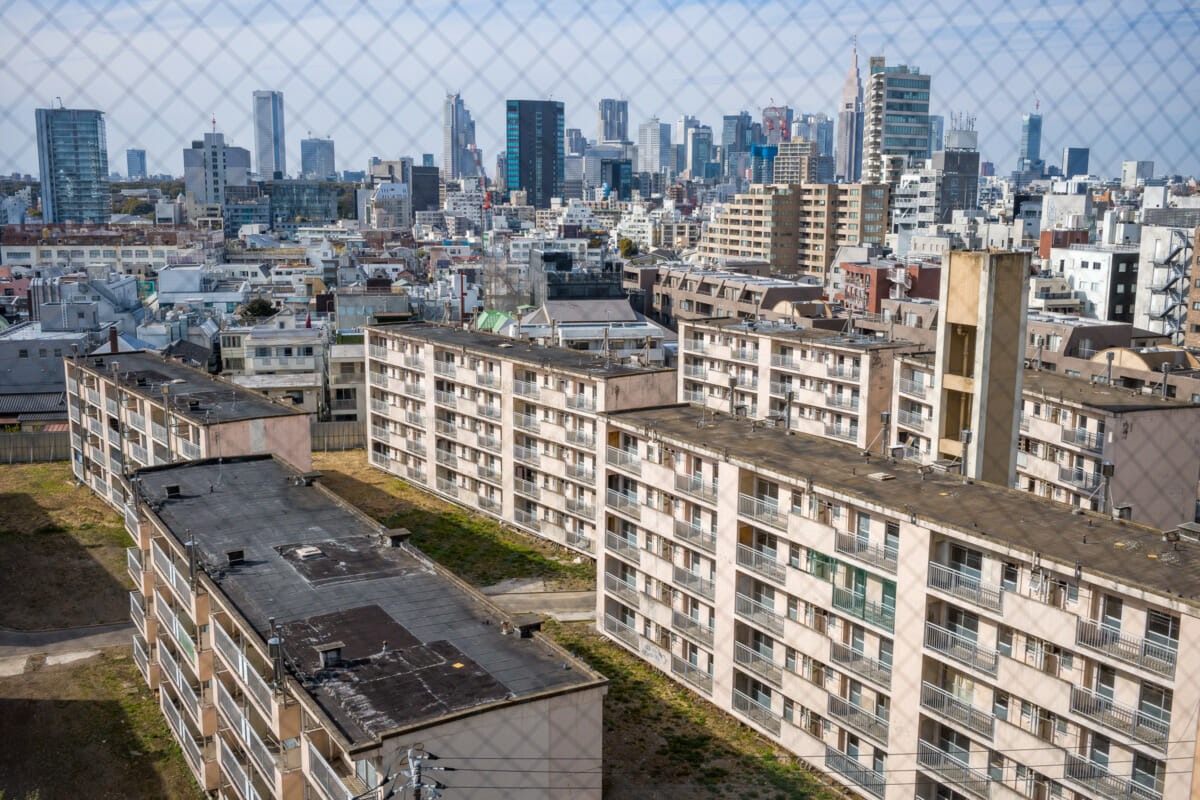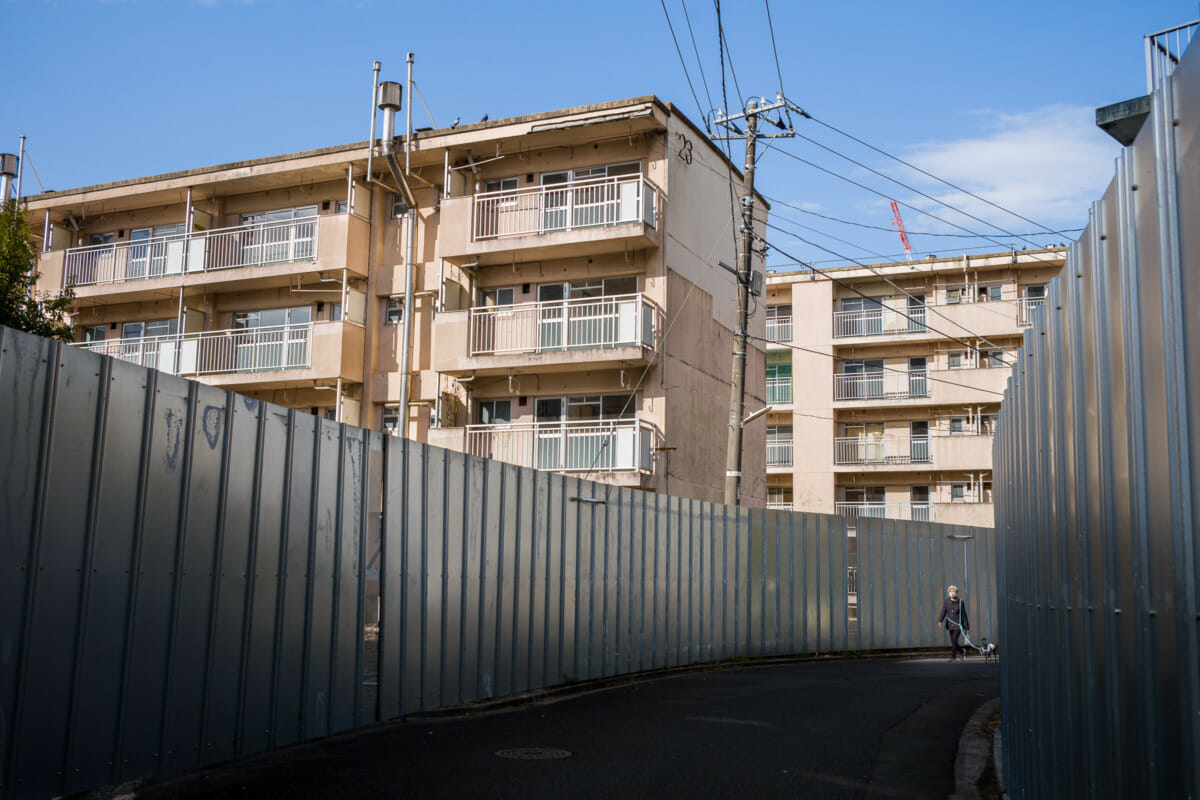About a month ago I posted photos of a huge and truly distinctive Japanese public housing complex. Known as danchi, these once modern concrete structures are now slowly disappearing as age catches up with them and far more desirable buildings take their place.
It’s a shift that isn’t the least bit surprising, as unlike that aforementioned behemoth, the vast majority of 1960s and 70s danchi are fairly modest in size. Invariably they are also incredibly utilitarian in design, just like the very dated apartment blocks below. The key difference with these, however, is that they are just a few minutes walk from Omotesando — one of the fanciest and most expensive areas in the capital.
With that in mind, it’s undoubtedly the last kind of accommodation you’d expect to see in such a neighbourhood, but with half of them gone already, and the rest being prepared for demolition, it’s presumably the last time it will be seen as well.


Jotta Vinti junior says
Senhor Chapman, Boa Noite.
Espero que o senhor esteja melhor.
Uma coisa me chamou a curiosidade.
Como é possível derrubar tantos prédios de habitação de uma vez?
Todos eles eram propriedade pública, isto é, não pertenciam aos moradores?
O governo local (do distrito ou bairro) pode fazer essa desapropriação em massa?
Isso me parece um pouco surpreendente, se tratando do Japão.
Lee says
Sorry, I had to use translate, so I hope I can answer properly.
Yes, these were all public housing, so that’s what they can demolish so many. None of them would have been privately owned. That said, I presume the local authority would have been required to find them new homes, but I’m not sure how that works in regards location, cost etc.
Jotta Vinti Junior says
Senhor Chapman, agradeço a informação.
Obrigado por tudo; cuide-se.
Günter says
What a contrast this is. Will they build more apartments?
Lee says
Yeah, it really is. I’m not sure to be honest, but where some of the already demolished buildings once stood is now a huge modern tower comprising of restaurants, housing and I think some businesses. All of which is very different to say the least.
Richard says
I recall those kinds of buildings when I lived in Tokyo in the early 1970’s. They were in better shape then but still an eyesore. Is there much of a need for public housing nowadays with the country’s declining birth rate? I hope the new buildings are aesthetically more pleasing. It would be great if you posted a few photos of these newer ones. Thanks!
Lee says
Yeah, such designs were purely pragmatic. No aesthetic considerations whatsoever.
I think so. Some new ones have gone up to replace demolished ones near me. Still a cheaper option than renting privately. Generally none of the upfront money either, which must be a huge help for many.
The building that replaced the danchi already demolished here is much better looking, but I don’t have the right gear (or skills) to do such structures justice. To be honest, they don’t appeal as photographic subjects either.
cdilla says
An interesting remaining outlier of the upmarket area.
When we were there in April 2019 we walked almost as far as there on a random off route wander down from Harajuku looking for affordable residential areas (we can dream :-)). I remember we veered off back towards Omotesando central then and passed a couple of massive towerblocks under construction which look to be complete now eventually popping back into the tourist stream across from the Boss building and our rendevous with a rather lovely lunch at the Brown Rice restaurant behind it. Oh to return there…
Lee says
Yeah, not much in the way of affordable round here. These were presumably the last, and I’m not sure you’d have wanted to stay here anyway.
Well, we are finally moving in the direction, so fingers crossed a return wont be that long away now.